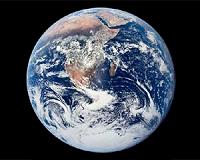| . |  |
. |
Woods Hole MA (SPX) Mar 02, 2010 A three-year field program now underway is measuring carbon distributions and primary productivity in the Northwest Atlantic Ocean to help scientists worldwide determine the impacts of a changing climate on ocean biology and biogeochemistry. The study, Climate Variability on the East Coast (CliVEC), will also help validate ocean color satellite measurements and refine biogeochemistry models of ocean processes. Researchers from NOAA, NASA and Old Dominion University are collaborating through an existing NOAA Fisheries Service field program, the Ecosystem Monitoring or EcoMon program. The EcoMon surveys are conducted six times each year by the Northeast Fisheries Science Center (NEFSC) at 120 randomly selected stations throughout the continental shelf and slope of the northeastern U.S., from Cape Hatteras, N.C., into Canadian waters to cover all of Georges Bank and the Gulf of Maine. This area is known as the Northeast U.S. continental shelf Large Marine Ecosystem. The climate study team will participate in three annual EcoMon cruises aboard the 155-foot NOAA Fisheries Survey Vessel Delaware II, based at the NEFSC's laboratory in Woods Hole, Mass. The most recent cruise returned to Woods Hole on February 18. Findings from the climate impact project, funded by NASA, will help scientists better understand how annual and decadal-scale climate variability affects the growth of phytoplankton, which is the basis of the oceanic food chain. The project will also examine organic carbon distributions along the continental margin of the East Coast and collect data for ocean acidification studies. John O'Reilly of the satellite ocean productivity group and Kimberly Hyde of the ecosystem assessment program at NEFSC's Narragansett, R.I., laboratory are co-principal investigators on the CliVEC project. Laboratory colleague Jon Hare, an oceanographer and plankton specialist, oversees the EcoMon program and is a collaborator on the new climate study. "The CliVEC program will provide a more complete understanding of the northeast U.S. shelf ecosystem," said Hare. "It extends our EcoMon survey efforts, and we are excited about the new knowledge and advances in satellite models that we will all gain from this collaboration and pooling of resources." O'Reilly has had a long collaboration with NASA scientists in developing algorithms for processing data from ocean color remote sensors on satellites that provide global maps of ocean surface characteristics. The satellite-transmitted data can also be used to develop oceanic primary production models and algorithms that measure carbon distributions in the ocean. Other lead investigators in the CliVEC project include Antonio Mannino from NASA's Goddard Space Flight Center (GSFC), Margaret Mulholland from Old Dominion University (ODU), and David Lary from the NASA-affiliated University of Maryland Baltimore County Joint Center for Earth Systems Technology. The team of scientists from GSFC and ODU is conducting water sampling and experiments to quantify primary productivity and carbon distributions. "Phytoplankton are the foundation of the food chain in the ocean and produce about half of the oxygen on Earth," said Mannino. "By understanding the distribution of phytoplankton populations and how they react to natural and anthropogenic forcing, we can better predict future responses of phytoplankton and possibly even fisheries." The Northwest Atlantic location was chosen for the CliVEC study because it is the crossroads between major ocean circulation features like the Gulf Stream and the Labrador Current. Discharges from rivers, seasonal changes in water column density stratification, the freshening of surface waters from melting of the Greenland ice sheet, and other climate-related factors can all alter ocean circulation patterns and affect the strength, timing and location of phytoplankton blooms, potentially decreasing annual primary production and changing ocean biology. Scientific activities during the recent 18-day cruise included collecting water samples from the surface to the ocean floor for a variety of chemical measurements, and sampling to identify the incursion of Labrador Current water into the Gulf of Maine. Instruments were also deployed to measure sea surface temperatures and salinities and to collect data on chlorophyll, oxygen and nitrate levels, and the depth of light transmission for primary productivity. In addition to the CliVEC activities, zooplankton samples were collected for the Census of Marine Zooplankton Project. Standard EcoMon sampling was also done, extending oceanographic and plankton time series that started in the early 1970s. Two observers were aboard to identify and count seabirds, and sightings of northern right whales and other whale species were recorded.
Share This Article With Planet Earth
Related Links WHOI NOAA Water News - Science, Technology and Politics
 Oceans are new front in fight against global warming: UN
Oceans are new front in fight against global warming: UNNusa Dua, Indonesia (AFP) Feb 25, 2010 UN environmental experts Thursday issued an urgent call to study the crucial role the oceans - as massive carbon stores - can play in the fight against global warming. The United Nations Environment Programme (UNEP) launched the "Blue Carbon" initiative together with the Indonesian government Thursday on the resort island of Bali. "A global scientific study of the role of marine and co ... read more |
|
| The content herein, unless otherwise known to be public domain, are Copyright 1995-2010 - SpaceDaily. AFP and UPI Wire Stories are copyright Agence France-Presse and United Press International. ESA Portal Reports are copyright European Space Agency. All NASA sourced material is public domain. Additional copyrights may apply in whole or part to other bona fide parties. Advertising does not imply endorsement,agreement or approval of any opinions, statements or information provided by SpaceDaily on any Web page published or hosted by SpaceDaily. Privacy Statement |